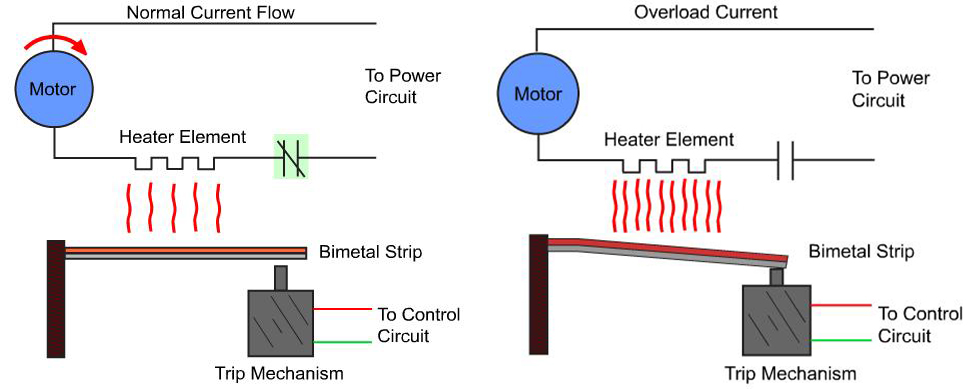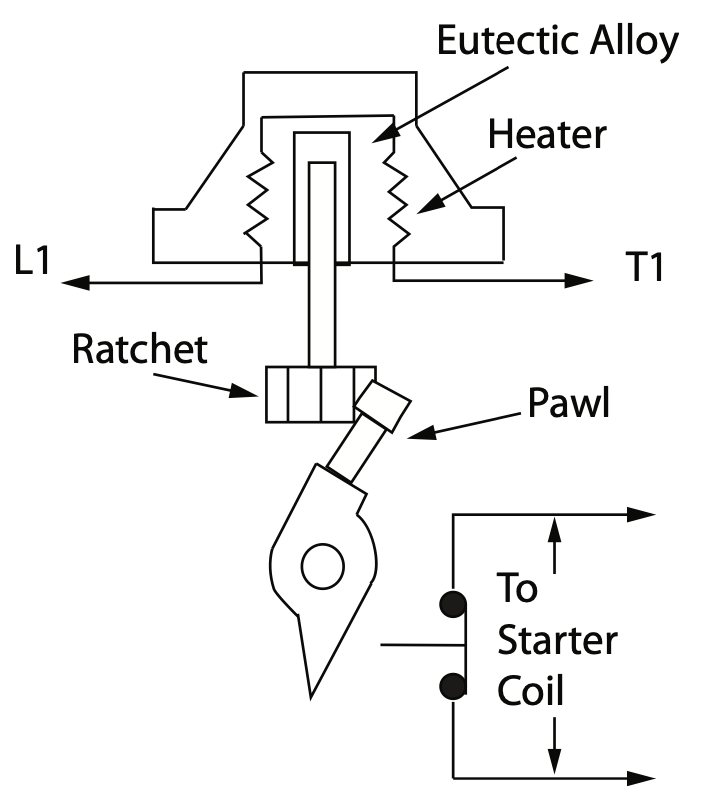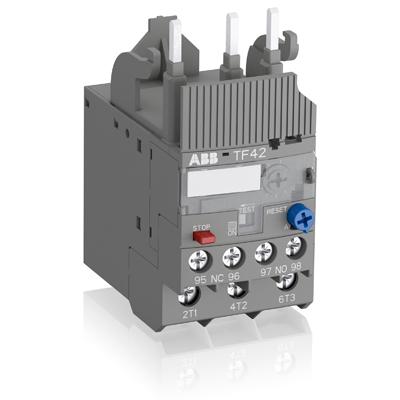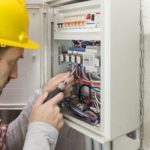Heat is a major factor in the performance and life of a motor, and one of the primary sources of motor heating is current running through the motor windings. Since heating is an unavoidable condition of motor operation, it’s important to protect the motor from overheating, or thermal overload.
In a previous post, we described several types of sensors that can measure the temperature of motor windings directly. But in some cases — particularly for AC induction motors — motor heating can be measured indirectly by thermal overload relays, which determine motor temperature by monitoring the amount of current being delivered to the motor.
Thermal overload relays are wired in series with the motor, so the current flowing to the motor also flows through the overload relay. When the current reaches or exceeds a predetermined limit for a certain amount of time, the relay activates a mechanism that opens one or more contacts to interrupt current flow to the motor. Thermal overload relays are rated by their trip class, which defines the amount of time for which the overload can occur before the relay responds, or trips. Common trip classes are 5, 10, 20, and 30 seconds.
Taking time, as well as current, into account is important for AC induction motors because they draw significantly more than their full rated current (often 600 percent or more) during startup. So if the relay tripped immediately when the overload current was exceeded, the motor would have difficulty starting.
There are three types of thermal overload relays — bimetallic, eutectic, and electronic.
Bimetallic thermal overload relays (sometimes referred to as heater elements) are made of two metals, with different coefficients of thermal expansion, that are fastened or bonded together. A winding, wrapped around or placed near the bimetallic strip, carries current.

Image credit: Siemens
As the current running through the relay (and, therefore, through the motor) heats the bimetallic strip, the two metals expand at different rates, causing the strip to bend toward the side with the lower coefficient of thermal expansion. When the strip bends, it actuates a normally closed (NC) contactor, causing it to open and stopping the current flow to the motor. Once the bimetallic relay has cooled and the metal strips have reverted to their normal state, the circuit is automatically reset and the motor can be restarted.
Eutectic thermal overload relays use a eutectic alloy (a combination of metals that melts and solidifies at a defined temperature), housed in a tube and connected to a heater winding. The supply current to the motor flows through the heater winding and heats the alloy. When the alloy reaches a sufficient temperature, it transforms rapidly to a liquid.

Image credit: Rockwell Automation
As a solid, the alloy holds a mechanical device, such as a spring or ratchet, in place. But when the alloy melts, the mechanical device releases, opening the overload contacts. Like the bimetallic design, a eutectic thermal overload relay cannot be reset until the alloy has sufficiently cooled and returned to its original, solid state.

Image credit: ABB
Electronic thermal overload relays measure current electronically, rather than relying on a heater mechanism, and so are insensitive to changes in ambient temperature. They’re also less prone to “nuisance,” or false, tripping. Electronic overload relays can provide data such as the percentage of thermal capacity utilization (%TCU), percentage of full-load amps (%FLA), time-to trip, current RMS, and ground fault current — information that can help operators conduct diagnostics and predict when the relay is at risk of tripping.
Electronic designs can also protect motors against phase loss (also referred to as phase failure), which occurs when one phase of current equals zero amps, often due to a short circuit or blown fuse. This causes the motor to draw excessive current on the remaining two phases and leads to significant motor heating.
Thermal overload relays are typically part of the motor starter, which includes the overload relay plus contacts. It’s important to note that thermal overload relays are only designed to protect the motor from overheating, and won’t trip if there’s a short circuit, so additional fuses or circuit breakers are necessary to protect the circuit.







Leave a Reply
You must be logged in to post a comment.